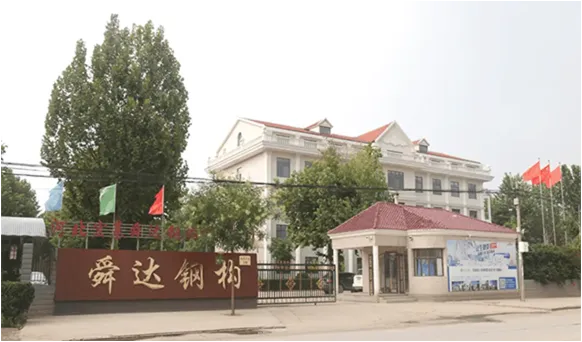- Afrikaans
- Albanian
- Amharic
- Arabic
- Armenian
- Azerbaijani
- Basque
- Belarusian
- Bengali
- Bosnian
- Bulgarian
- Catalan
- Cebuano
- Corsican
- Croatian
- Czech
- Danish
- Dutch
- English
- Esperanto
- Estonian
- Finnish
- French
- Frisian
- Galician
- Georgian
- German
- Greek
- Gujarati
- Haitian Creole
- hausa
- hawaiian
- Hebrew
- Hindi
- Miao
- Hungarian
- Icelandic
- igbo
- Indonesian
- irish
- Italian
- Japanese
- Javanese
- Kannada
- kazakh
- Khmer
- Rwandese
- Korean
- Kurdish
- Kyrgyz
- Lao
- Latin
- Latvian
- Lithuanian
- Luxembourgish
- Macedonian
- Malgashi
- Malay
- Malayalam
- Maltese
- Maori
- Marathi
- Mongolian
- Myanmar
- Nepali
- Norwegian
- Norwegian
- Occitan
- Pashto
- Persian
- Polish
- Portuguese
- Punjabi
- Romanian
- Russian
- Samoan
- Scottish Gaelic
- Serbian
- Sesotho
- Shona
- Sindhi
- Sinhala
- Slovak
- Slovenian
- Somali
- Spanish
- Sundanese
- Swahili
- Swedish
- Tagalog
- Tajik
- Tamil
- Tatar
- Telugu
- Thai
- Turkish
- Turkmen
- Ukrainian
- Urdu
- Uighur
- Uzbek
- Vietnamese
- Welsh
- Bantu
- Yiddish
- Yoruba
- Zulu
Dec . 12, 2024 10:22 Back to list
Exploring Industrial Buildings The Backbone of Modern Infrastructure
Industrial buildings have long been the backbone of our nation's infrastructure, serving as the cornerstone of manufacturing, storage, and logistics. These structures are designed to support various activities ranging from the production of goods to warehousing supplies, and even serving as research and development facilities. The evolution of industrial buildings reflects significant shifts in technology, design philosophy, and economic demands.
Historically, industrial buildings can be traced back to the Industrial Revolution in the 18th and 19th centuries when factories began to emerge in response to the growing need for mass production. Early industrial buildings were typically utilitarian, constructed from materials like brick and steel, with large open spaces designed to accommodate machinery and laborers. These structures were often built in locations that provided easy access to resources such as water and coal, critical for powering the industrial engines of the time.
As technology advanced, so did the design and functionality of industrial buildings. The introduction of the assembly line in the early 20th century necessitated buildings that could facilitate rapid production cycles. This led to the creation of large warehouses with high ceilings and expansive floor plans, allowing for efficient movement of materials and products. The mid-20th century saw the rise of modernist architecture within industrial design, characterized by clean lines, open spaces, and the innovative use of materials such as glass and concrete.
Today, industrial buildings serve a diverse range of industries, including manufacturing, logistics, and even technology. With the rise of e-commerce, warehousing and distribution centers have become increasingly important, requiring buildings that can adapt to the rapid shifts in consumer demand. Modern industrial architecture often incorporates features such as loading docks, high-bay racking systems, and climate control to ensure efficient storage and distribution processes.
industrial building

Sustainability has become a significant focus in the design and construction of industrial buildings. Architects and engineers are now considering the environmental impact of these structures, seeking to minimize energy consumption and reduce carbon footprints. This shift has led to the adoption of green building standards, such as LEED (Leadership in Energy and Environmental Design), which promotes sustainable construction practices. Key elements often include energy-efficient HVAC systems, solar panels, and rainwater harvesting systems. The goal is not just to create functional spaces but to ensure that they contribute positively to the environment.
The rise of smart technology is transforming the way industrial buildings are utilized. Automation, IoT (Internet of Things), and advanced data analytics are enhancing operational efficiency by integrating smart systems into logistics and production processes. These technologies allow for real-time monitoring of machinery, supply chain management, and energy consumption, significantly optimizing overall performance.
Moreover, the adaptive reuse of existing industrial buildings has gained traction in urban environments where space is limited. Many former factories and warehouses are being converted into mixed-use developments, which include residential, commercial, and creative spaces. This trend not only preserves historical architecture but also revitalizes communities, creating vibrant neighborhoods that blend the old with the new.
In conclusion, industrial buildings have played a crucial role in shaping our economy and infrastructure. As technology and societal needs evolve, so too will the design and purpose of these structures. Emphasizing sustainability, adaptability, and innovation will ensure that industrial buildings continue to meet the challenges of the future while remaining integral to our economic landscape. Whether as a hub for manufacturing or a center for logistics, these buildings embody the spirit of progress and resilience in an ever-changing world.
-
How Do Prefabricated Steel Structures Transform Modern Construction?
NewsJul.14,2025
-
How Do Prefabricated Metal Buildings Redefine Modern Construction?
NewsJul.14,2025
-
How Do Prefab Insulated Metal Buildings and Steel Structures Revolutionize Modern Construction?
NewsJul.14,2025
-
How Do Pre - Engineered Steel Structures Redefine Modern Construction?
NewsJul.14,2025
-
Advancing Modular Construction with Prefabricated Metal Structures
NewsJul.14,2025
-
Advancing Industrial Infrastructure with Prefabricated Steel Solutions
NewsJul.14,2025
Products categories
Our Latest News
We have a professional design team and an excellent production and construction team.












